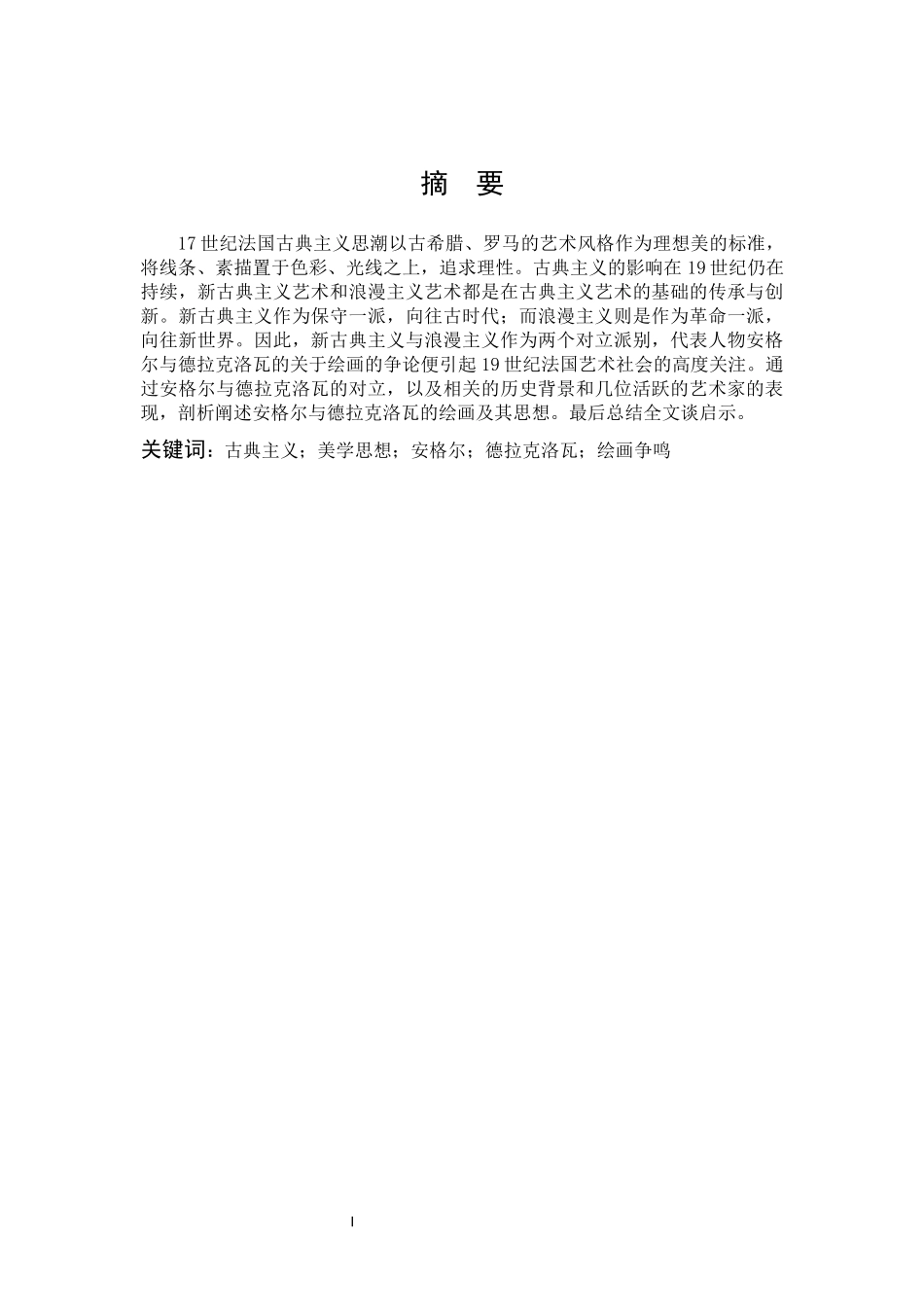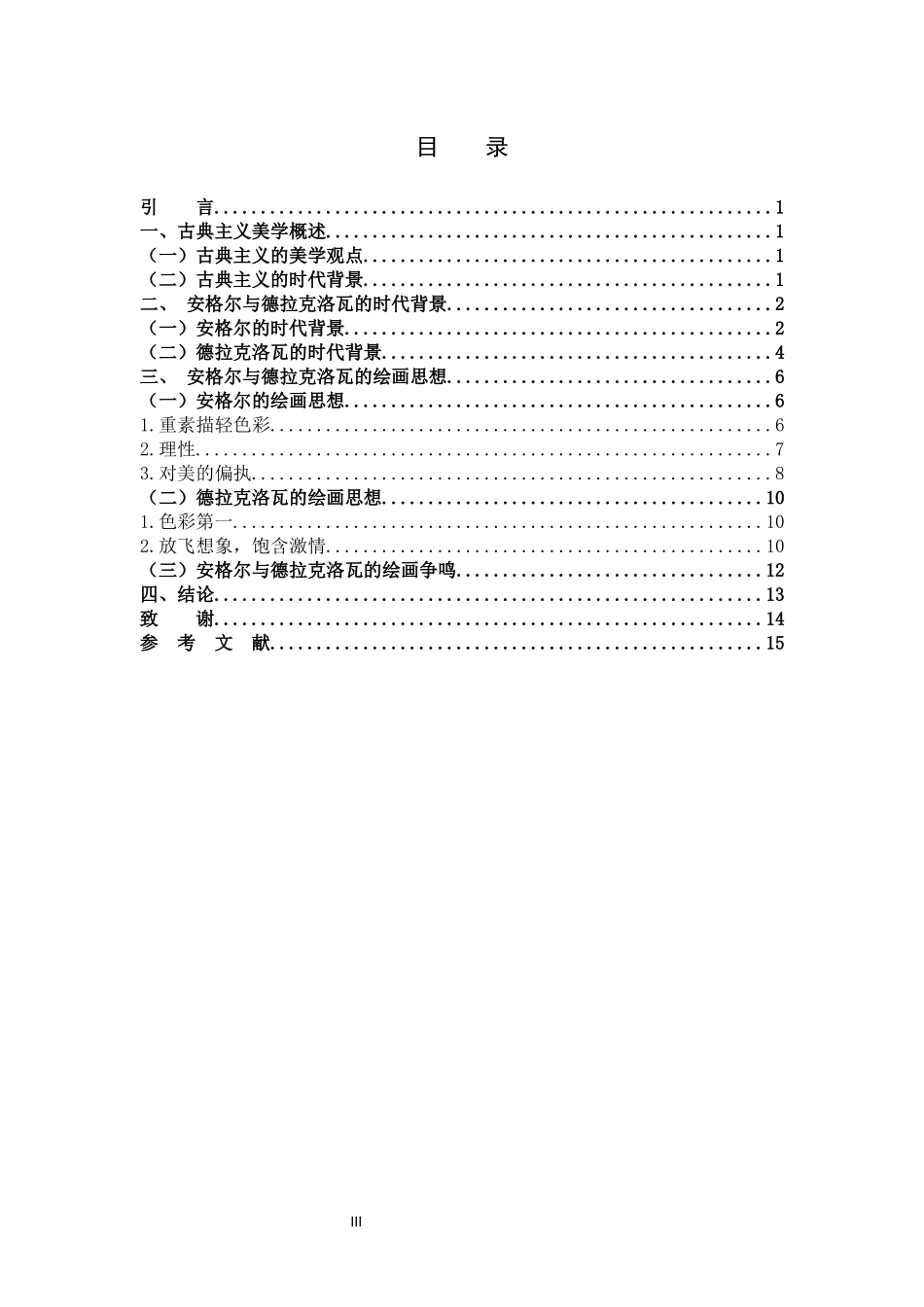I摘 要17 世纪法国古典主义思潮以古希腊、罗马的艺术风格作为理想美的标准,将线条、素描置于色彩、光线之上,追求理性。古典主义的影响在 19 世纪仍在持续,新古典主义艺术和浪漫主义艺术都是在古典主义艺术的基础的传承与创新。新古典主义作为保守一派,向往古时代;而浪漫主义则是作为革命一派,向往新世界。因此,新古典主义与浪漫主义作为两个对立派别,代表人物安格尔与德拉克洛瓦的关于绘画的争论便引起 19 世纪法国艺术社会的高度关注。通过安格尔与德拉克洛瓦的对立,以及相关的历史背景和几位活跃的艺术家的表现,剖析阐述安格尔与德拉克洛瓦的绘画及其思想。最后总结全文谈启示。关键词:古典主义;美学思想;安格尔;德拉克洛瓦;绘画争鸣IIAbstractIn the 17th century, French classicism took the artistic style of ancient Greece and Rome as the standard of ideal beauty, placing lines and sketches on top of color and light, and pursuing rationality.The influence of classicism continued in the 19th century. Neoclassical art and romantic art are both inheritance and innovation based on classic art. Neoclassicism, as a conservative school, yearns for the ancient times; while romanticism, as a revolutionary school, yearns for the new world. Therefore, Neoclassicism and Romanticism as two opposing factions, the debates on painting between the representative figures ;Ingres and Delacroix drew great attention from the French art society in the 19th century.Through the confrontation between ;Ingres and Delacroix, as well as the related historical background and the performance of several active artists, the analysis and elaboration of the paintings and ideas of ;Ingres and Delacroix. Finally, we summarize the full text and talk about revelation. Key words:Classicism;Esthetics thought;Ingres;Delacroix;painting contentionIII目 录引 言............................................................1一、古典主义美学概述..............................................


